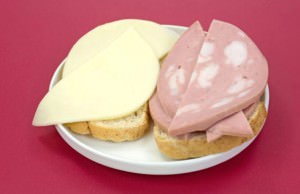21 Cooking Skills Every Adult Should Have

Not knowing how to cook as an adult is just as bad as continuing to give your mother your laundry to do even after having moved out. Of course, you don’t have to be a five-star chef, but there are some cooking skills that every person should have mastered by the time they consider themselves to be full-grown adults. Here are 21 of the most common and essential ones.
1. How To Cook Pasta
Cooking pasta seems like one of the simplest culinary tasks. However, everyone who has ever boiled pasta knows that the end result is not always as desired and that there are actually many ways you can ruin pasta.
First of all, you have to take a very big pot – the bigger the better. Pasta cooks better when it has a lot of water to swim in. The general rule is to use at least four quarts of water per every pound of pasta. Fill the pot with water and bring to boil. Once it’s boiling, add some salt – approximately one teaspoon, stir, add the pasta, stir again. Some people like to add a few drops of oil to the water to prevent the noodles from sticking together.
Turn the heat down so the water is simmering or boiling gently, not violently. Keep the pot uncovered and stir occasionally. Don’t cook the pasta any longer than it says on the package. If you like your pasta al dente (as it’s supposed to be), taste it a few minutes before the time is up.

2. How To Separate An Egg
Many recipes call for separated whites and yolks and many people also try to avoid yolks because they contain more cholesterol. Whatever the reason, every adult person should be able to separate egg whites from yolks.
Fresh eggs are easier to separate because the membrane surrounding the yolk is harder, so that’s something to keep in mind. Chilled or refrigerated eggs are also easier to separate than those that were sitting at room temperature. One of the simplest methods is to use an egg separator. If you don’t have any, the next simplest one is to use your hands – crack the egg over your open hand and let the white slide down into the bowl through your fingers, while the yolk remains in your palm.
Another great method is to crack the egg at its “fattest” part against a sharp edge and gently transfer the yolk back and forth between two shell halves. The white will pour out and the yolk will remain.

3. How To Chop Onions
Chopping onions is something that absolutely every person should know how to do, simply because onions are amazing veggies that are used in almost every meal –from soups and salads to roasts. However, chopping an onion is not easy, and not just because of the tears.
There are several ways to chop an onion. If you need it diced, the best way is to cut the onion into two halves and peel the skin. Then, use a big, sharp knife (preferably an onion knife) to cut five or six vertical slices, without touching the root and then to make several vertical slices while holding the onion half pressed gently against the surface. Finally, cut downward slices that are perpendicular to the initial ones in order to dice.
If you want wedges or slices, cut the onion in half, remove the skin and the bulb end. Use the tip of a sharp chef’s knife to cut lengthways into slices. For wedges, do the same thing only at a slightly tilted angle.

4. How To Boil An Egg
Another cooking skill that should be the simplest thing ever but that so often goes wrong and leaves us with an unsatisfying end product is hard-boiling an egg. The problem with boiled eggs is not just that it’s hard to tell when it’s done, but also that the eggs often crack and leak out.
Place the eggs into a large saucepan and cover with water so that they are completely immersed. If you are boiling many eggs at once, use more water. Some people add salt to prevent cracking and/or vinegar to prevent the whites from leaking if one of the eggs does leak. Bring the pan to boil at the highest temperature and then turn the stove off. If you have the stove that cools completely as soon as you turn it off, let the eggs simmer for another minute or two at a low temperature.
Cover the pan and let the eggs sit there for 10 to 12 minutes. With this method, it’s very hard to overcook the eggs even if you leave them for 15 or even 20 minutes. When they are done, run cold water over the eggs for a minute or place them in a bowl of ice water.

5. How To Boil Rice
If you need just plain, white rice as a side dish or to use in a recipe that requires plain rice for further cooking, you have to keep a few things in mind. First of all, it’s highly recommended to first soak the rice or at least rinse it. Next, measure the rice and the water for cooking.
The general rule is to use 1 and ¾ cup for every cup of rice. If this is too complicated use 1:2 ratio. Use a heavy-bottomed medium-sized pot or a skillet with a tight-fitting lid, preferably one made of glass, so you can see what’s going on inside without having to uncover the pot. Put rice and water and add some oil and salt if preferred. Bring to boil and as soon as it starts boiling turn down the heat to simmer.
If you have an electric stove that takes forever to cool down, use two burners – one for boiling and the other for simmering. Simmer gently without uncovering the pot (this is important) until all the water is gone. Do not stir! Remove the pot from the stove and let it sit for no less than five and no longer than 20 minutes.

6. How To Roast A Chicken
Cooking a whole chicken? Sounds like you need to have chef skills (or at least Mom skills) to do that! However, this is actually one of the simplest roasts and one that everyone needs to know how to do because it comes in handy during busy work weeks and holidays.
First of all, take one 3-4 pound chicken and rinse it under some running water. Pat-dry with a paper towel and place it in an oiled cast-iron skillet, large casserole dish or even a pie plate, whatever fits in your oven. Preheat the oven to 450 F and place the rack in the lower middle section. Remove the giblets by reaching with your hand into the chicken’s cavity. You can place some lemon wedges, herbs and garlic inside the cavity to give the chicken some extra flavor, but this is optional.
Now rub some olive oil or softened butter all over the chicken, especially drumsticks and breast. Sprinkle generously with salt and pepper. Once the oven has reached 450F, place the chicken in the pan breast side up in the oven and lower the temperature to 400F. Let it roast undisturbed for between 50 and 90 minutes, depending on the size of the bird. The chicken is done when the legs and wings become loose and the fluids run clear. When it’s done, let it rest for 15 minutes before carving and serving.

7. How To Melt Chocolate
There are two basic methods for melting chocolate. The best one is to use a double boiler, which is a dish consisting of a saucepan where hot water is poured, and a smaller dish where the chocolate goes, that fits securely over the larger one. First you need to heat the water in the saucepan on medium-low.
When it starts to gently simmer, place the chocolate bowl (where you previously placed chopped chocolate) over the water and turn the stove off. When the chocolate starts to melt, stir with a plastic spatula and remove from the stove, stirring until it’s shiny and smooth. The second method is to use milk, cream or water to melt chocolate. Use a small pot, place chopped chocolate in it and melt it on low or medium heat.
As soon as it starts melting, add a small amount of liquid, approximately one tablespoon per pound of chocolate. The liquid must be hot before you add it to chocolate. Stir continuously and once the chocolate is melted let it sit for several minutes before whisking everything again to get a smooth, uniform mixture.

8. How To Julienne Vegetables
A julienne cut is a great way to make your dishes look fancy but it is also necessary for many recipes, such as stir-fries and veggies with dips. It’s basically cutting veggies into tiny sticks. The veggies that are most commonly julienned are carrots, zucchinis and cucumbers, but you can also julienne other stuff, like apples and even chocolate.
You will need a large, non-serrated knife and a good chipping board. Peel your veggie and trim the ends, roots and stems. If the veggie is round, slice it lengthwise and place it on the board flat side down. First cut into slices that are 1/8 inch or 1/4 thick and then cut those again in half. You can trim the sticks to be the same length, usually two inches. If you are using round veggies, cut them first into circles and then slice those into uniform sticks and discard the rounded ones from the end.

9. How To Grill Burgers
Although perfectly juicy, delicious burgers also depend on which meat and seasoning you are using, right now we’ll focus just on the grilling, which can make or break a burger. If you are using an electric grill, preheat it to 450F. For charcoal grills, which give the burgers that special smoky aroma, arrange the coal into a bigger and a smaller heap. The smaller one will be used for grilling on medium-low heat.
Shape the patties by first forming balls and then gently flattening them into patties approximately one inch thick. Do not overwork the meat and let it rest while the grill is heating. When the frill has reached the desired temperature, grill the patties for two minutes on each side and them lower the heat (or transfer the meat to the lower temperature area of the grill) and cook for 2-3 minutes for medium-rare, 3-4 minutes for medium and 5-6 for well-done burgers.

10. How To Bake Potatoes
Baked potatoes make a great side dish as they go amazingly well with almost any kind of meat, even with fish and veggies. To make great baked potatoes, pick even-sized ones, preferably the russet kind, and give them a good scrub with a brush under running water to remove any dirt residues. Pat them with a paper towel so that they are perfectly dry. Preheat the oven to 350F.
You can bake halved potatoes but it’s so much better to bake them whole – that way when you cut them you can put cheese and butter between the halves to melt. Prick the potatoes with a fork all over, rub some olive oil, salt and pepper. You can also use cumin, paprika and other seasonings. Place the potatoes on a rack and bake for 60-70 minutes, until the skin is crisp and the potatoes are soft when pricked with a knife.
11. How To Make Gravy
Gravy is a necessary part of every Sunday dinner, not to mention holidays like Christmas and especially Thanksgiving, which wouldn’t be complete without a big dish of delicious gravy. You can always make instant gravy from the bag but the homemade kind is so much better.
Take the roast pan and remove all drippings except for two tablespoons. Place the pan on the stove on medium heat and add two tablespoons of corn starch previously dissolved in about ¼ cup of warm water. Whisk the starch to blend with the drippings and continue until the gravy starts to thicken.
Now slowly add water or stock (approximately two cups of it) and season with salt. You can also use milk or cream instead of water and stock, and instead of starch you can use flour, but you will need two spoons of it. If your gravy is too thick, feel free to add more liquid.

12. How To Brown Meat
Meat browning is a process that is applied mostly to ground beef. Before the meat is added to other food ingredients in a meal, such as tacos or burgers, it often needs to be browned, which is a process that takes out the extra fat from the meat and gives it a special, distinctive flavor.
This method of partial cooking is actually pretty easy, which is fortunate, since browned meat has so many uses in various cuisines and everyone should know how to do it. It is best to use a non-stick skillet or frying pan heated over medium heat. If you don’t have a non-stick dish, put a little oil in it to prevent sticking, but not too much, because the meat will soon release its own fat. Before placing the meat in the skillet, pat it dry to remove any moisture. Cook for five to seven minutes, until all the meat is brown, while stirring constantly with a wooden spatula to break all the meat into equal bits.

13. How To Make Stock
Stock is a very important part of almost every cuisine. It’s essential for many recipes, such as risottos, and while you can always buy ready-made canned stock it’s so much better to use homemade one. Stock comes in several versions, mainly meat and vegetable stock, but here we will focus on the kind made of meat (chicken, to be specific) since it’s somewhat more widely used.
To make chicken stock, take some four pounds of chicken back, legs and wings, cut into two-inch pieces. Saute an onion until golden and add half of the chicken pieces, sautéing additionally for several minutes or until no longer pink. Transfer to a bowl and sauté the rest of the chicken.
Put the first batch back in the pot and cook on low for 20 minutes. Boil two quarts of water, add to the pot and bring to boil along with salt and and bay leaves. Allow to simmer for 20 minutes on medium-low. When it’s done, strain it using cheesecloth. You can keep the stock for a week in the fridge or for several months in the freezer.

14. How To Crush Garlic
Chopped and crushed garlic are two very different things. Crushed garlic has a finer texture and it’s main purpose is to give a very subtle and even aroma. Many recipes call for the use of crushed garlic so you better learn how to do it.
The most difficult part in crushing a garlic clove is removing the peel. To do this, use a large chef’s knife to cut the tip of the root and the rough end of the clove. Then, place the knife on the clove and press firmly. This will loosen the skin and it will be easy to peel. After this, you can crush the garlic by pressing it some more with the knife, using a rocking motion for a better effect.
Instead of a knife, you can also use a garlic press, of course. If you don’t have one, you can even use a nice round rock to crush a garlic clove wrapped in wax paper.

15. How To Knead Dough
Kneading is the essential part of baking, as it not only unites the ingredients but also releases the gluten and makes the dough firm, yet porous and spongy.
After you combined the ingredients for the dough and mixed them well in a bowl, transfer the dough onto a floured surface. Put some flour on your hands too and shape the dough into a ball. Press the ball down and reshape it again, repeating this several times. Next, punch the dough with the heels of your hands by pressing forward until it becomes springy.
Then, fold the dough in half and press with the heels of your hands using a rocking motion. Fold again, press again and continue doing so for ten minutes in a rhythmic and steady way. Your dough will be ready when it becomes shiny, smooth, elastic and lump-free. It should also be able to hold its shape.

16. How To Make Tomato Sauce
Another essential skill that everyone needs to master. There’s nothing better than nice homemade tomato sauce that can be used for pizzas, pastas, casseroles and many other dishes.
For about 8 pints of sauce you will need some 15 pounds of nice ripe tomatoes, some salt and lemon juice or vinegar. Wash the tomatoes and make an X-shaped cut at the bottom of each one. Place the tomatoes in boiling water for a minute or so, take them out, cool them under cold water and peel the skin. Next, puree the tomatoes in a food processor to a desired consistence (chunky or smooth) or chip them with a knife.
Place pureed or chopped tomatoes in a Dutch oven or a large stockpot and simmer for 40 to 60 minutes, stirring occasionally. When the sauce is done, add ¼ cup of lemon juice or vinegar and two teaspoons of salt. To preserve the sauce, pour it into sterilized jars and boil them for 30 minutes.

17. How To Blanch Vegetables
Blanching vegetables is a process that has many purposes. First of all, it cleans the surface from any dirt or bacteria. Second, it helps remove the skin. Third, it’s recommended to blanch veggies before freezing them. Finally, many recipes call for blanched vegetables so it’s really something you need to know how to do.
Fortunately, blanching is very simple. First you need to wash your veggies thoroughly under running water. Next, bring a large pot of water to boil. Add vegetables (chopped or whole, depending on the recipe and your needs) to the pot and boil for one to four minutes, depending on the vegetable (leafy greens blanch for one minute, tomatoes for one to two, broccoli two to three and green beans for four minutes). Remove the veggies from the pot with a slotted spoon and transfer into a large bowl of ice-cold water to stop the cooking process and to keep the colors nice and vibrant.

18. How To Poach An Egg
Most people, especially if they are not very skilled in the kitchen, will tell you that poaching is the most difficult way to cook eggs. While it is a touchy task, poaching is certainly something that you can easily master after just one or two tries.
To poach an egg, use a narrow saucier or a similar dish and fill it with water one inch deep. Bring to boil, then add a bit of salt and two teaspoons of vinegar. Carefully break a fresh, cold egg into a small dish, like a custard cup. When the water starts boiling, create a whirlpool in the pot using a spoon that you will turn in one direction.
Carefully pour the egg into the very center of the whirlpool. Remove the pot from the stove, cover it and let the egg poach for five minutes, without uncovering or touching it, or even looking at it, for that matter. It’s very important not to disturb the egg. After five minutes, remove the egg with a slotted spoon and serve right away.

19. How To Prepare An Avocado
To cut an avocado in half, place it lengthwise on a cutting board. Use a large, sharp knife and cut lengthwise all the way around the pit while holding the avocado firmly against the board. Twist the two halves apart.
Next you need to remove the pit. Use a teaspoon to gently work your way around the pit to loosen it and then gently push it out. If the avocado is fully ripe, you should be able to remove the peel just by using your hands. For not so ripe ones, you might have to use a knife. Once the skin is removed, check if any of the dark green parts have remained on the pulp and remove them as well.
To dice the avocado, cut the halves into quarts and cut those again lengthwise. The wedges should be easy to cut into nice little dice. If you are going to preserve one half of the avocado and you don’t want it to turn brown, place it in some water until you are ready to serve it.

20. How To Make A Batter
Who doesn’t like deep-fried food? It’s an ultimate guilty pleasure but unfortunately (or, should we say, fortunately?) it’s not the easiest or the tidiest way to prepare food. For most people the most difficult part of deep-frying is to make a nice, smooth batter. But if you know how to do it properly, it’s really not that hard.
Take 5 ½ cups of all-purpose flour and sift it. Slowly add 2 1/3 cups of whole milk, whisking vigorously as you do it. When the milk is mixed well with the flour, add one whole egg. Whisk with a wire until it’s smooth but don’t overdo it, otherwise it will become too springy and grainy. And that’s it. It’s really easy to do and it doesn’t require any fancy ingredients. Dip the food you want to fry into the batter and place into hot oil immediately. This batter can be kept in the fridge for one day.

21. How To Make A Dressing
Making a dressing is something that absolutely everyone needs to be able to do. A nice dressing is the crucial part of any salad and thus of any decent dinner. There are hundreds of different types of dressings, but one of the most basic ones is vinaigrette.
The formula for vinaigrette is really simple – one part vinegar to three parts oil, plus salt and pepper to taste. You can use white or red vinegar or apple cider vinegar, and as for the oil, it’s always recommended to use extra virgin olive oil or some other cold-pressed oil. Vinegar, oil, salt and pepper are the foundation for the dressing to which you can add other stuff, like herbs, spices, seeds, chopped nuts and such.
You can combine mayo and buttermilk with herbs and spices to make a ranch-styled dressing, oil, vinegar, mustard and veggies to make Italian dressing and blue cheese, mayo, buttercream and sour cream to make Blue Cheese dressing.










